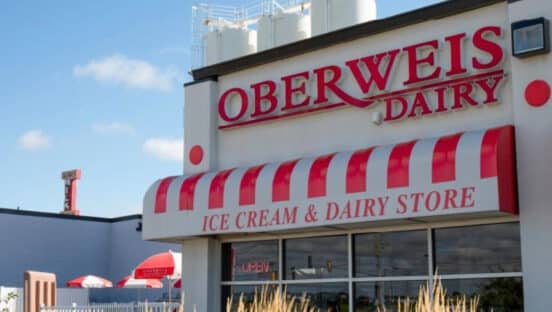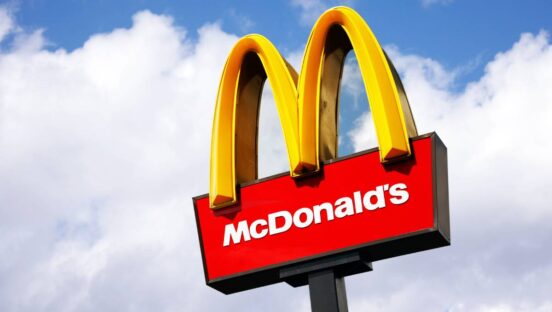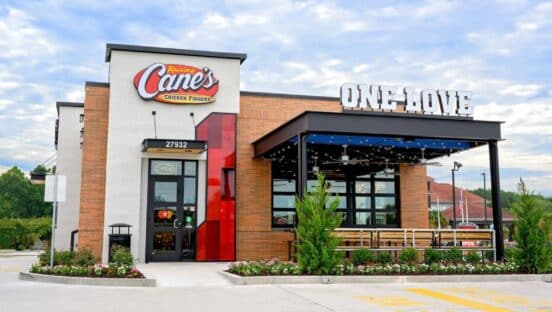U.S. restaurant sales could surpass the 13-digit threshold for the first time in 2024, according to the National Restaurant Association’s annual State of the Industry report.
Sales are expected to exceed $1.1 trillion this year, up more than 10 percent from the $997 billion originally forecasted for 2023. That growth will come in the face of a host of ongoing headwinds—from persistently high food and labor costs to staffing challenges and tighter household budget sheets.
“The amount is staggering, so it helps to think about it on a per-day basis,” said Hudson Riehle, senior vice president of the Association’s research and knowledge group. “It averages out to over $3 billion each and every day. Breaking that down into an hourly component, you’re talking about $125 million per hour all year. So, the industry continues to be an important spending arena for the consumer, and it is that consumer spending which ultimately translates into sustained growth for the industry.”
While overall sales are expected to grow, the higher cost of doing business will constrain margins, and operators expect competition to remain intense, thanks to the increasing array of foodservice options and record number of access points at the customer’s disposal.
The State of the Industry report is based on analysis and forecasts from the Association’s economists, as well as surveys of restaurant operators and consumers conducted throughout the year. Here are five takeaways that offer a glimpse of what’s to come.
Operators Are Cautiously Optimistic
Around 80 percent of restaurant operators expect their sales will increase (33 percent) or hold steady (45 percent) in 2024 versus 2023. A little less than a quarter (22 percent) anticipate lower sales volume. And while the business environment will remain challenging, 22 percent of operators say they’ll use this as an opportunity to expand. Limited-service operators (29 percent) are somewhat more likely than full-service operators (16 percent) to report plans to add locations this year.
Profitability Remains Pressured
The outlook is less bullish when it comes to profitability. The vast majority of operators cite the economy (93 percent), food costs (97 percent), inflation (98 percent), and labor costs (98 percent) as significant or moderate challenges in 2023. More than a third (38 percent) say their restaurant was not profitable last year.
Some of those headwinds could ease in the coming months. Falling interest rates and moderating inflation could offer consumers some relief and keep discretionary spending at healthy levels. Still, the report notes that “disinflation is not deflation” and “prices will continue to run higher across many of their budget categories.”
Elevated costs for operators are expected to persist throughout 2024, and just 27 percent anticipate being more profitable this year. Average food costs are up more than 20 percent from 2019 levels. That’s a top concern for 18 percent of operators heading into 2024. Average wages, meanwhile, are up more than 30 percent, a top concern for 15 percent of operators.
“This is the highest environment for wage increases in the industry’s history, and it puts extortionate pressures on maintaining profitability,” Riehle said.
Debt repayments and supply chain issues also are top concerns. Four in ten operators say their restaurant is still carrying debt accumulated in the pandemic. Just over half report delays or shortages of equipment (54 percent) and food (48 percent).
Consumers are Watching their Wallets
Only a third of U.S. adults give the national economy a rating of “excellent” or “good.” More than half (55 percent) use those words to describe the economic situation in their local community. While they’re optimistic about how things are going in their immediate area, just a fifth are confident in their personal finances and don’t anticipate holding back on spending. Another 48 percent are taking a “wait-and-see” approach and holding back somewhat. A third say they’re very concerned about their personal finances and are keeping a tight rein on their expenditures.
Restaurants looking to nudge consumers out of this holding pattern are finding success with a well-presented value proposition. Nine in ten operators say their customers are more value-conscious than they used to be, and seven in ten adults say they frequently look for daily specials or discounts when visiting a restaurant. Customers are more flexible about when they dine if there’s a deal, with 85 percent of adults saying they’d likely take advantage of discounts for dining out on slower days of the week and 84 percent saying they’d likely use discounts offered for dining at off-peak times of the day. Similarly, three-quarters say they’d opt for a smaller-sized portion for a lower price–a trend that can help reduce food waste and protect profits.
The report reinforces the growing importance of loyalty and rewards programs for generating repeat business. More than half (52 percent) of adults currently participate in those programs. Most of them sign up for more than one–3.6 on average. The overwhelming majority (96 percent) of participants say it’s a good way to get more bang for their buck. Around half of loyalty members say they’re less likely to try new restaurants because they prefer to go where they can earn rewards. Just under 80 percent say they’re more likely to visit a restaurant where they can earn points, even if it isn’t as convenient as other places.
More Tech is on Deck
Over three-quarters of operators say using technology gives them a competitive advantage, but most believe their restaurants could do more to keep up. Just 13 percent think their restaurant is on the leading edge in using technology compared with their peers while 23 percent think their operations are lagging.
Half of all operators surveyed by the Association devoted resources to tech upgrades in the dining room last year. The same amount invested in technology to enhance the customer experience. Forty percent devoted resources to enhancing back-of-house efficiency. Even more operators are planning investments in these areas in the year ahead. Top priorities for 2024 include making the service area (55 percent) and kitchen (45 percent) more productive as well as strengthening cybersecurity (45 percent).
Consumers’ affinity for technology varies by age group. Gen Z and millennials are far more likely to say tech facilitates a better overall experience. They’re also more likely to want more tech options in both quick-service and full-service restaurants.
“One of the most important findings of this report is a fruition of years of development of generational differences in expectations and utilization of restaurant technology,” Riehle said. “It’s extremely important for operators to know their demographics and align their technology with that customer base, because for the younger consumer, the expectation now is that some aspect of the experience incorporates technology.”
Opinions and expectations also vary by occasion. Technology is most appreciated for delivery transactions, with a third of customers indicating they want to see restaurants that deliver further improve the ordering process and improve the accuracy of estimated delivery times.
Nearly half (46 percent) of adults say technology has a positive impact on their experience at full-service restaurants. They zeroed in on expediting the beginning and end of the meal–things like easier ordering or facilitating payments–when asked about the aspects of the sit-down experience that would benefit most from future upgrades. Additionally, 70 percent of adults are open to using options that allow them to place their order in advance online, schedule a time to arrive at the restaurant, and get their food shortly after they’re seated.
On the quick-service side, 39 percent of customers say tech options have a positive impact and 22 percent say they have an adverse effect on their experience. Opinions are evenly split when it comes to future investments from operators. Twenty-seven percent think there should be less of a focus on new tech in the future. Roughly the same amount voted for more, with faster and easier ordering landing at the top of their wishlist.
Staffing Shortages Will Stick Around
Providing 15.5 million jobs representing 10 percent of the total U.S. workforce, the restaurant industry returned to pre-pandemic staffing levels last year and regained its status as the country’s second-largest private sector employer.
Despite that growth, staffing remains an uphill battle for the industry. Many operators say they’re understaffed. Overall, 45 percent say their restaurant doesn’t have enough employees to support existing customer demand. That’s slightly more prevalent for quick-service (48 percent) than full-service (41 percent). Among those currently understaffed, roughly 60 percent of operators say their staffing level is more than 10 percent below what they need.
Seventy percent indicate they have job openings that are hard to fill, including 73 percent of full-service and sixty-six percent of limited-service restaurants. Approximately two-thirds (67 percent) of operators with difficult-to-fill openings say they’re having trouble finding applicants for kitchen positions. A majority have unfilled job openings for service positions, too.
Nearly nine in 10 operators say recruiting and retaining employees is a significant or moderate challenge for their restaurants. Most don’t see things improving in 2024, either. Only 10 percent predict recruiting and retaining will be easier in 2024, while 31 percent expect it to be even tougher and 58 percent anticipate it to be about the same as 2023.
Technology is helping operators find efficiencies to free up staff and do more with less labor. Nearly half (47 percent) say the use of technology and automation to help with the current labor shortage will become more common across their segment in the year ahead, including 44 percent of full-service and 49 percent of quick-service operators. Sixty-nine percent say tech integration will augment rather than replace human labor. Only 14 percent report making investments in equipment or technology that actually replaces employees.
The restaurant workforce is projected to grow in 2024, but it will likely happen at a much slower pace than in recent years. The Association’s economists anticipate an additional 200,000 jobs will be created over the next 11 months, pushing total employment to 15.7 million by the time the calendar flips into 2025. Job growth will continue to moderate after that. The industry is expected to add 150,000 jobs annually over the next eight years and employ a total of 16.9 million workers by 2032.













